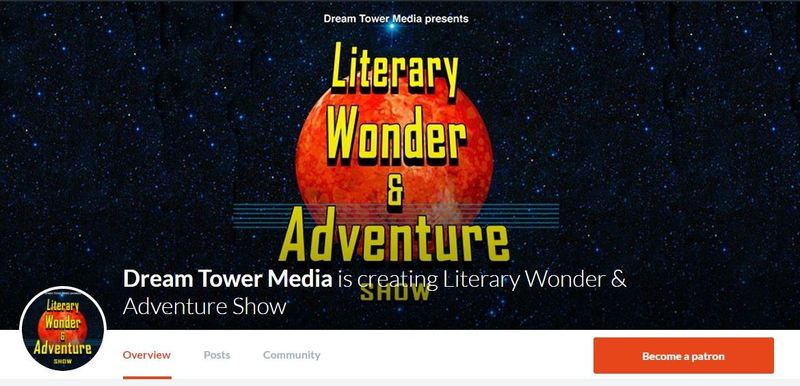These are the stories that the Dogs tell when the fires burn high and the wind is from the north. Then each family circle gathers at the hearthstone and the pups sit silently and listen and when the story’s done they ask many questions:
“What is Man?” they’ll ask.
Or perhaps: “What is a city?”
Or: “What is a war?”
from the Editor’s Preface to City
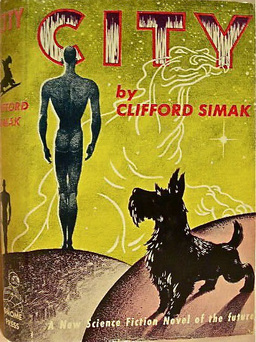 City (1952), by Clifford D. Simak, unfolds over thousands of years, telling of the end of humanity, the rise of dogs and robots to terrestrial preeminence, and finally, the near abandonment of Earth. It’s a fix-up of nine stories, eight written between 1944 and 1951, and one more, added to later editions, in 1973. It is a book conceived of in anger and despair, yet one that strives to posit a better, more humane world — even if it’s one devoid of humans.
City (1952), by Clifford D. Simak, unfolds over thousands of years, telling of the end of humanity, the rise of dogs and robots to terrestrial preeminence, and finally, the near abandonment of Earth. It’s a fix-up of nine stories, eight written between 1944 and 1951, and one more, added to later editions, in 1973. It is a book conceived of in anger and despair, yet one that strives to posit a better, more humane world — even if it’s one devoid of humans.
Perhaps because we, by which I mean the post-WW II generations, have grown up aware of the deepest, most evil tendencies of humanity, it’s difficult to appreciate completely the anger and despair over what happened during the 1930s and 40s. Years after its publication, Simak said:
“The series was written in a revulsion against mass killing and as a protest against war.”
That revulsion was so intense that Simak contemplated the extinction of his own species and its replacement by a better one.
I suppose following the First World War, there was some hope that humanity would avoid that sort of mass slaughter again. Instead, it only increased by many magnitudes. In an essay on City, Robert Silverberg wrote that the story “Desertion” was written in 1943 in direct response to reports from Europe about the Holocaust. Simak was a gentle writer, so there is little anger or bitterness in the novel, but he wasn’t prone to sentimentality either. His depiction of humanity’s downfall and supplantation is remorseless.
When Simak collected the stories, he presented them as a tales told by dogs to each other as perhaps no more than legends. For each story, Simak wrote an interstitial explaining what different dog philosophers thought about the veracity of each story, as well as any meaning it might hold for their society.
…
Read More Read More
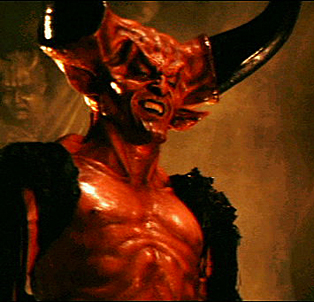 I recently met a woman whose father-in-law had been a federal prison guard at a medical prison that held the “Blind Sheikh” back around the time of the 9/11 terrorist attack. The Blind Sheikh (Omar Abdel-Rahman) was an associate of Osama bin Laden and the planner behind the 1993 World Trade Center bombing — one of the early “masterminds” of Al Qaeda. In other words, a real life counterpart to the nastiest, most nefarious villains in our fictional thriller novels and cinema fare.
I recently met a woman whose father-in-law had been a federal prison guard at a medical prison that held the “Blind Sheikh” back around the time of the 9/11 terrorist attack. The Blind Sheikh (Omar Abdel-Rahman) was an associate of Osama bin Laden and the planner behind the 1993 World Trade Center bombing — one of the early “masterminds” of Al Qaeda. In other words, a real life counterpart to the nastiest, most nefarious villains in our fictional thriller novels and cinema fare.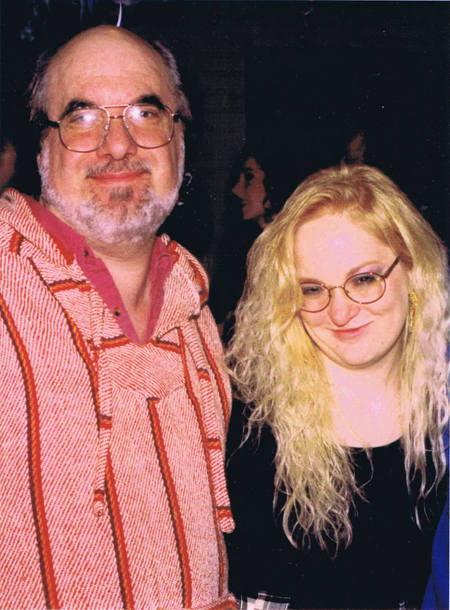
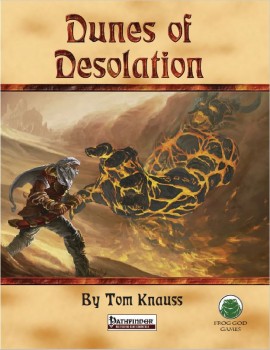



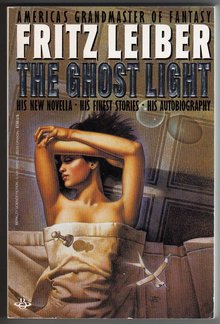 Here at Black Gate we often have posts on films and TV shows as they connect with or pertain to our favorite genre(s). If we don’t talk as much (or at all) about live drama, it’s probably because there’s not as much SF or Fantasy happening on the stage as there is on the screen. I’d think we’d all agree that with a very few exceptions stage effects are simply not equal to the kind of special effects SF and Fantasy often need.
Here at Black Gate we often have posts on films and TV shows as they connect with or pertain to our favorite genre(s). If we don’t talk as much (or at all) about live drama, it’s probably because there’s not as much SF or Fantasy happening on the stage as there is on the screen. I’d think we’d all agree that with a very few exceptions stage effects are simply not equal to the kind of special effects SF and Fantasy often need.
